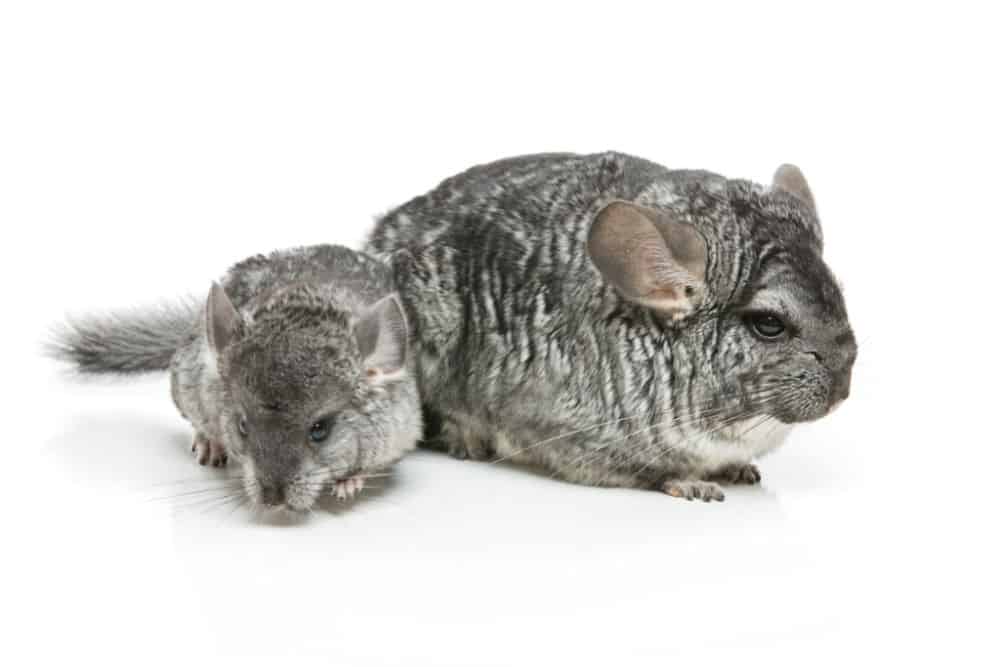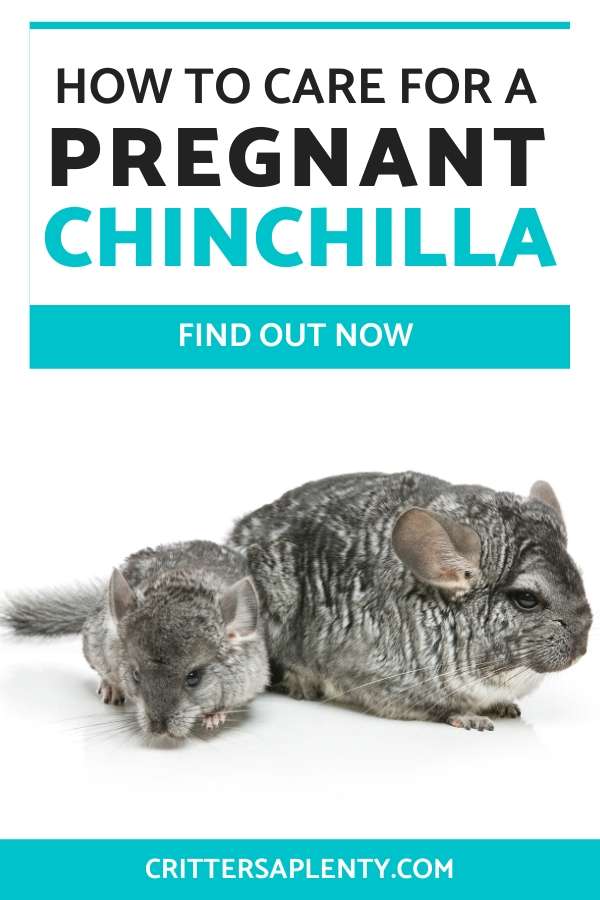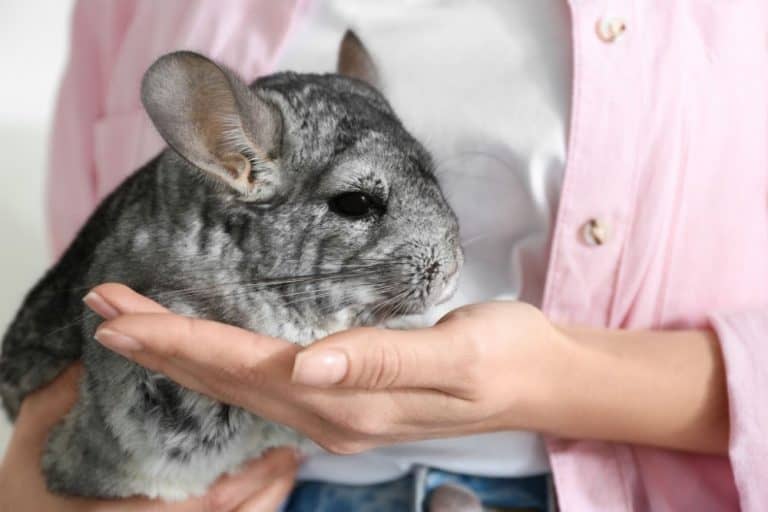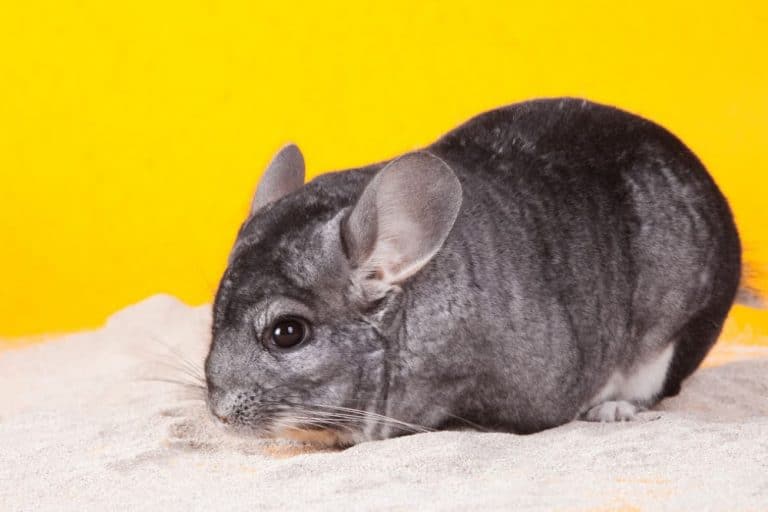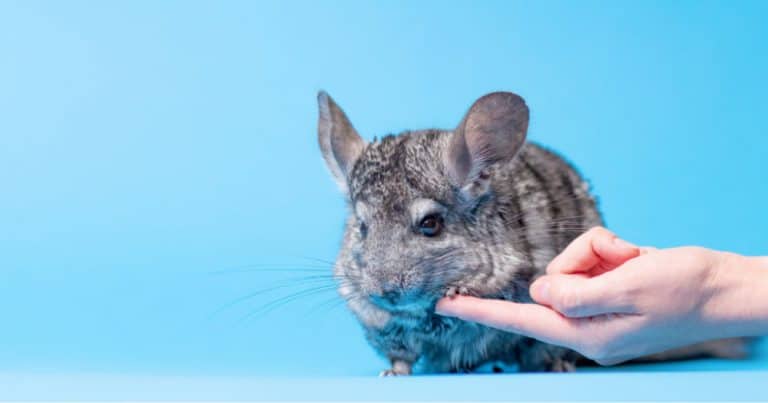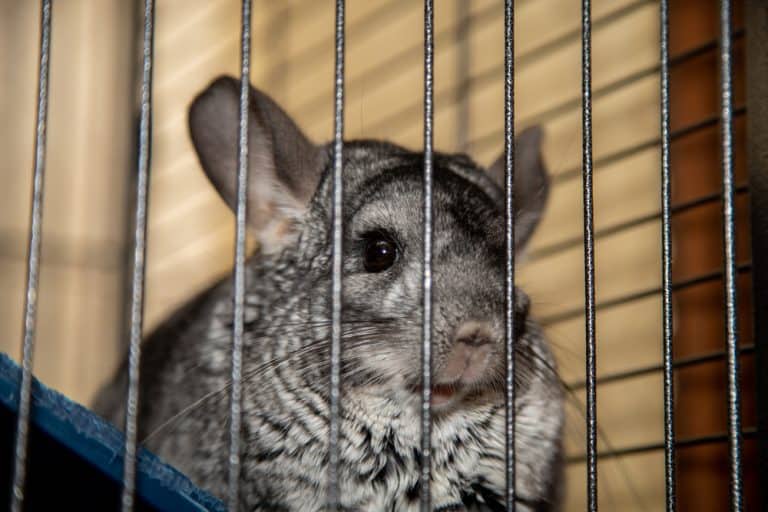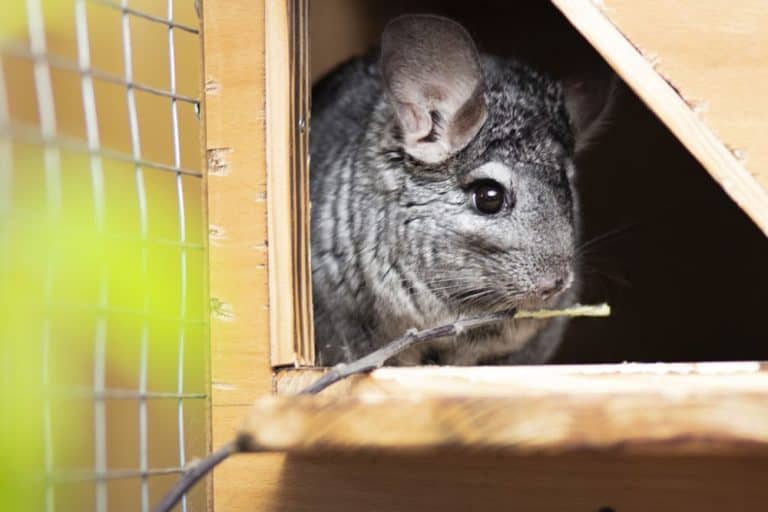The Essential Guide: How To Care For A Pregnant Chinchilla
When talking to owners of female chinchillas, you hear the story time and again. “I didn’t know my chinchilla was pregnant!” It can be a scary thought, especially if you were just getting used to the idea of owning one chinchilla. Accidents happen all the time with misgendering, male contact, and even coming to the pet store pregnant. As a good rule of thumb, you should always expect a female to be pregnant until proven otherwise. But if you think your chinchilla is pregnant, what should you do?
We have created the essential guide on how to care for a pregnant chinchilla just for you! We will talk about:
- How to tell if your chinchilla is pregnant
- What to do for the mother’s care before and after pregnancy
- Possible complications
- And why you shouldn’t try to breed
Why You Shouldn’t Breed Intentionally
We will start by talking about why breeding isn’t a good idea for the average person. This article is not to condone breeding of any kind unless you are responsible and well educated. There is a whole lot more work that goes into breeding a chinchilla (or any animal) that most people don’t realize. It’s so easy to get wrapped up in all the cute fluffiness of the kits that you want to collect them all. Some people might think it is an easy way to get money, but this only leads to poorly bred chinchillas with defects.
Some Reasons why you SHOULDN’T breed chinchillas:
- If you think that being a breeder means you will be making tons of money, you might want to think again. There are so many chinchillas on the market that it is challenging to get into the business and make profits—many people who start off breeding end up surrendering their chinchillas into the shelter.
- You need to have lots of extra money to start. Cages, food, specialized equipment, and medical costs are a lot. If something goes wrong, you need to take your chinchilla to a specialty vet, which can cost thousands for one visit.
- When you don’t know the history of the chinchillas you intend to breed, you shouldn’t breed. You could potentially pass along serious medical conditions to kits that won’t live healthy lives. These unhealthy kits will be a money pit, and no one will want to purchase from you.
- You can’t breed every chinchilla together. There is a precise science to it. And if not done right, you could harm the mother and the babies.
- Most states have laws against breeding, or you have to have individual licensing to do it.
Breeding chinchillas should only be done by professionals. We understand that accidents can happen. But it is your job to prevent accidents from happening again.
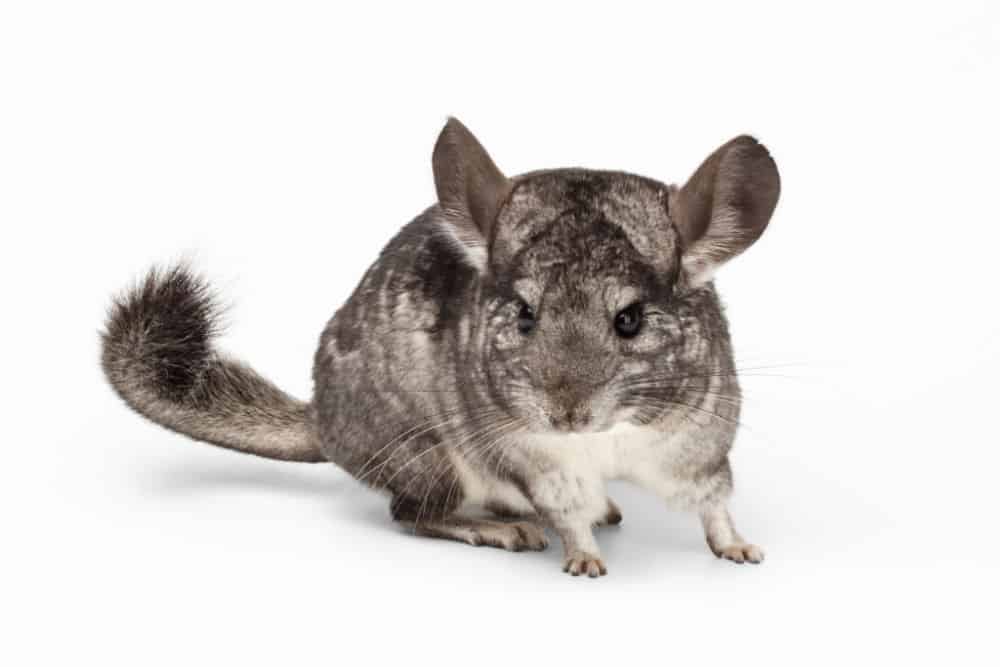
Signs Of Pregnancy
Now we will talk about how to tell if a female is pregnant. When purchasing or adopting a female, it is best always to assume that she is pregnant. An average chinchilla gestational duration is 111-120 days. So you should count 120 days from the time that you bring your chinchilla home to determine that she is pregnant or not. During that time, there are a few signs that your chinchilla is pregnant.
Weekly Weight Gain
When you bring your new chinchilla home, you should start weekly weigh-ins to check for weight gain or loss. Most females don’t gain weight until after the first 60 days, and some might not gain at all. But weighing your chinchilla could give you a good idea that she is pregnant if she is increasing at a constant rate every week. You can weigh your chinchilla using a kitchen scale and a small Tupperware container. Until the 111-120 days are up, you should weigh your chinchilla at the same time once a week and record it for tracking purposes.
There are of course some exceptions to this. If you have bought a young chinchilla, she might be growing because she is maturing. Or if you have adopted a chinchilla, they could gain weight because of the change in food. And of course, there are extreme situations where a chinchilla might have been underweight due to improper care. You would expect these chinchillas to gain weight rapidly at first.
A healthy adult chinchilla can weigh anywhere from 400-600 grams, and on the larger size of 700 grams. Having this reference will help you see if your chinchilla is gaining a healthy weight or might be pregnant. How big your female gets depends on how many kits she has. If she only has one, likely, she won’t gain a noticeable amount at all. The most common litters are 2-3 kits, but chinchillas can carry as many as 6.
Increased Eating
Along with this weight gain is eating for two or more. Your female might start to eat a lot more. You shouldn’t worry about gaining too much weight, though. Chinchillas aren’t known to overeat and become obese unless there is a medical reason.
Nipple Changes
As a mother prepares for her young, her nipples will enlarge for nursing. A chinchilla has six nipples on their stomachs that you usually can’t easily see. If your female is pregnant, they might extend and become red. You might notice that they are tender to the touch, and your female doesn’t like prodding.
Nesting
Every expected mother also goes through a nesting phase. You will notice that your chinchilla is preparing an area to have her babies safely. She will dig in her bedding, push things out of her nesting box, and rearrange her cage. She is trying to make the place perfect for her new babies.
Mood Swings
One of the most common signs of a pregnant female is mood swings. Your chinchilla might usually be friendly and love attention, but she will start to be aggressive and avoid contact with you. And the same can be said for chins that typically don’t like attention. They will sudden love to cuddle and want out of their cage. Her hormones are all out of wack at the moment, and sometimes she might switch back and forth so fast that you won’t know what to do.
Lethargy
As your female gets closer to her due date, she will become lethargic. She will be sleeping a lot and even reduce the amount that she is eating. Growing babies can be tough, especially if she is carrying multiples.
Vocal
Another sign that your chinchilla is close to delivery is that they become very vocal. Females start to squeak and whimper more throughout the day and night. These sounds could be from discomfort or pre-labor contractions. It is best to make sure that you are entirely prepared for kits soon when you get to this phase.
Feeling Kits
And the obvious sign that your chinchilla is pregnant is that you can feel them. You should never feel around on a chinchilla’s stomach if you expect pregnancy. Doing so could cause harm to the mother and the kits. But for some owners, they never know that their chinchilla is pregnant until they feel the kits while holding them.
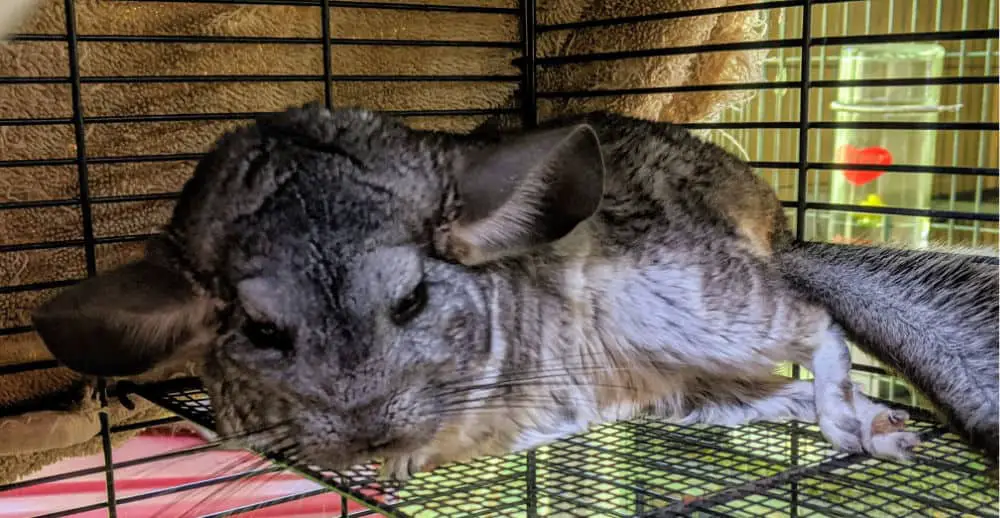
How To Care For A Pregnant Chinchilla
Now that we know the signs, we can talk about how to care for a pregnant chinchilla. Pregnant chinchillas do have slightly specialized care that you should follow. These measures are to protect your chinchilla and the kits once they are born.
One Level Cage
The most significant change for a pregnant female is that she will need a different cage. Ideally, your cage should be no larger than 18 inches tall with half-inch spacing in the bars. In this cage, there should be no ledges, wheels, or houses. All you need is the food dish, water bottle, chew sticks, and clean bedding. You will want to start the mother off in this cage from the moment that you suspect pregnancy. You never know when she might give birth, and you will want the mother and kits safe.
This might seem like a barren cage, but it is to protect the mother and babies. Kits are born very active. They will immediately try to climb the walls and bounce around. If your cage has ledges and houses, your kits will likely hurt themselves by falling off of them. And if the bars are wider than half an inch, your babies will escape. And wheels shouldn’t be given to kits since the early days are for conserving as much energy as possible so that they can gain weight.
Keeping these things out of your maternity cage is also good for the mother. It will prevent her from overexertion and keep her kits safe in the womb. If you are worried that she feels too exposed, you could take a piece of fleece to cover one side of the cage. The fleece could act as a secured den since you can’t put a house in.
Separation
If your chinchilla has been housed with another, you will need to separate them to make the pregnant one more comfortable. With pregnancy hormones, your chinchilla might not tolerate others well. If a fight should break out, it could be deadly. It is also a good idea to double-check the sex of the other chinchilla. If it is a male, this separation will need to be permanent to prevent back breeding. You also need to ensure that the cages are at least 4 inches apart, as pregnancies can still happen if they are side by side.
Diet
Most people question how to care for a pregnant chinchilla’s dietary needs. In actuality, there is little that you need to do here. If you are feeding a high-quality pellet diet, you shouldn’t have to supplement at all. Foods like Oxbow Complete and Mazuri have everything that a chinchilla needs to stay healthy. You should never give vitamins outside of a veterinary recommendation, and chinchillas never eat fresh fruits or vegetables.
The only thing that you should do differently is providing a variety of hay. Choosing a mixture of alfalfa hay and timothy hay gives the expecting mother the extra fat and calories she needs. Alfalfa is also high in calcium that expecting mothers need for their milk supply and their health. And this hay should be clean and available at all times.
Dust Baths
Should a pregnant mother still have dust baths? Yes, they are essential for her health and keeping her fur clean. You can give an expectant mother her regular dust baths, but stop when it gets close to her due date. You don’t want to provide her with a dust bath too close to her due date because the dust can contaminate her vaginal opening and cause infections. 10-14 days after the kits are born, she can resume regular dust baths alone until the kits are old enough.
Handling
You should never handle a pregnant chinchilla unless necessary. Grasping an expectant mother could cause damage to her uterus, the placenta, and the kits. Improper handling could cause a miscarriage.
If you do have to pick up your chinchilla, make sure not to grasp around the waste. Use gentle hands and never lift by the tail. Lifting by the rear is another leading cause of miscarriages. Chinchillas are a very fragile creature, so it is best to leave pregnant females be.
Temperature
Chinchillas are always very sensitive to heat, and pregnant females are more prone to strokes. You will want to keep your chinchilla away from drafts and out of direct sunlight. Her ideal temperature is between 60-70 degrees and no more than 60% humidity. Keeping your chinchilla’s activity level lower will keep her feeling cooler in hotter climates. You might even want to install a thermometer and hygrometer next to her cage to keep a close eye on the room’s temperature.
Treats
A pregnant chinchilla must get only the best food and hay quality possible. Chinchillas don’t usually eat a ton of treats, to begin with, but you should refrain from all treats while she is pregnant. If you give too many treats to your pregnant female, it can cause a nutrient deficiency in both her and her kits. Not to mention, she will likely become picky and won’t want nutritious foods anymore.
Medical Conditions
Another crucial step in caring for a pregnant chinchilla is to watch for medical conditions. Chinchillas are a fragile animal, and the pregnancy and birth can be hard on a female. If you have adopted your chinchilla, you may not know her past. And for chinchillas from a pet store, they may be so young that it will be a rough pregnancy. Here are a few of the most common ailments of pregnant chinchillas.
Back Breeding
Back breeding is the result of a mother getting pregnant right after giving birth. A female can get pregnant with another litter just 36 hours after she has given birth. Having back to back pregnancies can be detrimental to her health, her new kits health, and her unborn litter. It is rough on her body and makes it hard to care for the existing kits. And since she will be nursing one litter while growing another, no one will be getting enough nutrients. Back breeding can cause mutations, deficiencies, and even death of both the mother and kits. This is why the separation of males and females is essential.
There are only a few ways to tell if your chinchilla was back bred. If your chinchilla was adopted and she recently had kits that are barely eight weeks, the math suggests she was back bred. Back breeding rarely happens from buying a chinchilla from a pet store, but not impossible. In that case, you will have to be ready to hand-rear the kits and paying for extra medical attention the mom might need.
Calcium Deficiency
Calcium deficiency is prevalent in all pregnant mammals. Calcium is used for our teeth and bones to keep them healthy. But when a female is pregnant, a lot of her calcium reserves go to her growing babies to develop their bones and nervous systems. Calcium is also being used up by milk supply before a baby is born.
All of this is why we recommend giving your chinchilla a mix of timothy hay and alfalfa. Alfalfa is high in calcium and fatty nutrients to support bone health and milk production. But you don’t want to give only alfalfa to your chin. Too much calcium can cause bladder stones, so there is a delicate balance needed. Your chinchilla will know how much she will need naturally of both to maintain healthy kits.
If your chinchilla has a calcium deficiency, it usually will appear in her teeth first. Her teeth should be a deep orange color. If they start to turn yellow, you should take her to the vet immediately.
Miscarriage
Miscarriages are very common in chinchillas. They could miscarry if they are stressed, mishandled, or any number of other medical reasons. The biggest sign that your chinchilla miscarried is blood in the cage and on her tail and legs. You will rarely find the fetuses or placenta, as the mother will instinctually eat this to prevent predators. But not all females expel the fetus. If your chinchilla is coming up on her due date and still hasn’t shown signs that she is ready to give birth, a trip to the vet is needed.
In some cases, fetuses can mummify inside of the uterus and cause infections in chinchillas. Even if you do suspect that the fetus was expelled, a trip to the vet is a good idea. If not all of the kits are removed and the placenta, it could cause sepsis. Your vet can do a simple x-ray to see if she had miscarried.
Birth Process
Many people reading this may be wondering how to tell if their female is going into labor. This is a great question, and if you want to be home for the birth, it can be useful to know the signs. Chinchillas shouldn’t need any help delivering her babies. You should interfere as little as possible in this delicate time. Giving the mom a quiet room with some space will help her deliver her babies quickly and safely. But being home in case of a complication never hurts.
Likely Time
Most chinchillas give birth in the early morning hours or late evenings. These times are when they are generally up and moving around anyway, so it won’t seem off. Given that we are usually asleep during these times or out of the house, most people miss the birthing process. So if you plan to be present for the birth, check on your chinchilla early in the mornings and try to be home in the evenings.
Stage 1
The first step of your chinchilla going into labor is making a nest and chirping a lot. She might seem restless because she is uncomfortable with the onset of contractions.
Stage 2
Next, your female’s water will break. She will be standing up on her back legs for most of the labor, cleaning herself as she goes. Her fur might be wet from the fluid. Some chinchillas make a lot of vocal sounds during this process as the baby is moving into the birth canal. Your female will be cleaning regularly to prevent infections.
Stage 3
Now the kit is ready to be born. They should be headfirst in the canal. If they are feet first, this can cause issues. But before moving your chinchilla, call a vet for any recommendations. Once the kit is within reach, your female will then use her teeth to gently pull them out.
This whole process takes 30 minutes to an hour. And if there are more kits, they will come within 30-45 minutes after each other. Once all of the kits are born, your female will resume care for the kits. If it has been more than 3 hours of labor, you should bring your chinchilla into the vet.
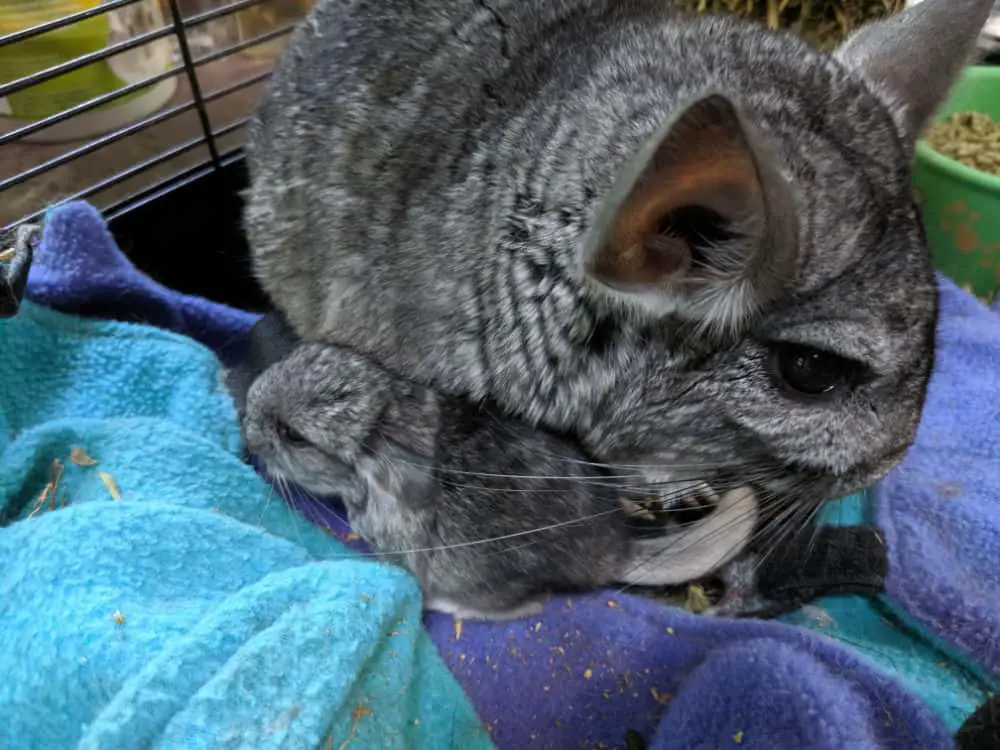
Birth Aftercare
Aftercare for the mother and kits is very simple. Chinchillas are great mothers and can take care of her kits with ease. But to be on the safe side, there are a few things you should do to help give the mother and babies the best success.
Once the labor is finished and all kits have made it into the world, leave the mama and babies alone. They need rest and to relax before you start to handle them. If you move on to the next step before they are ready, the mother could get aggressive. Once the mother has rested, and the kits have eaten and started moving around, it is safe for you to handle them. They are usually ready about an hour after birth.
The first thing you will want to do is check the mother. Make sure that there is no continual bleeding and that her stomach is warm. Warmth means that she can produce milk, but it won’t fully come in for another three days. You will also want to check for any lumps that might indicate there are more babies. If you feel bumps but labor has stopped, take the mother and kits to the vet for an x-ray.
The kit’s after birth care is effortless. You will want to weigh them on the first day. A healthy kit should weigh 35-60 grams depending on how many are in the litter. A kit that weighs under 25 grams is considered weak, so you should be prepared to hand-rear them if the mother rejects them. For the first two weeks, you will want to weigh them daily, and then once a week afterward. For the first three days, the kits might lose weight before the mother’s milk comes in. After the milk entirely comes in the kits should gain 5-10 grams weekly. If your kits are not gaining properly, you will need to bottle feed them to help them thrive.
If you have a large litter, you will also want to keep an eye on the mother’s teet health. Kits are born fully furred, energetic, and with teeth. If she has a large litter, this could do a number on her nipples. If they become cracked, inflamed, or bleeding, call your vet for a cream to put on them.
Preventing Pregnancy
The most critical aftercare step is to prevent more pregnancies. If you adopted two chinchillas that were missexed, you could either keep the males and females separated, or have them fixed. Spaying and neutering a chinchilla can have many complications, so consider this if you have a vet who you trust and is an expert in chinchillas. If you choose to keep your males and females separate, you will want to make sure their cages are at least four inches apart. Chinchillas have been known to breed through the cage gaps, and your female will get pregnant again if that close.
You will also have to sex the kits to prevent them from breeding back to the mother. Kits are ready to wean around eight weeks old. They are usually easier to sex around this time too. A male and female look very similar. The best way to tell them apart is by gently lifting the tail by the base and looking at them from behind. The male will start developing testicles and will have a large gap between the anus and penile cone. Females will have a small gap between their anus and vaginal opening that looks like a small slit. Above that slit will be the clitoris, which can be longer and look like a penile cone.
If you have male kits, you will want to remove them from the mother before they are ten weeks old. At ten weeks, the males will hit puberty and can technically breed back to the mother or sisters from his litter.
Wrapping It Up
That is a lot of information on how to care for a pregnant chinchilla! It can seem overwhelming to think that your chinchilla family could easily double or triple within a matter of weeks. But, with the proper care and the guide of an experienced vet, your female chinchilla should do great.
Related Questions
Do chinchillas mate for life?
Female chinchillas tend to be aggressive toward other females. When a female is ready to mate, she can also be aggressive toward the males. Of the two genders, females are the more dominant gender. Females are mostly monogamous; they usually only have one mate throughout their lives. On the other hand, males can potentially have many female mates. This is especially true of domesticated males. Often, one male is bred with many females to create many offspring to sell as pets.
How many babies do chinchillas have?
For chinchillas, gestation (length of time that she is pregnant) lasts about 111-120 days before she gives birth. In the wild, females usually have a litter twice a year. Each time they give birth, they can have one to six babies. These groups of babies are called litters.

